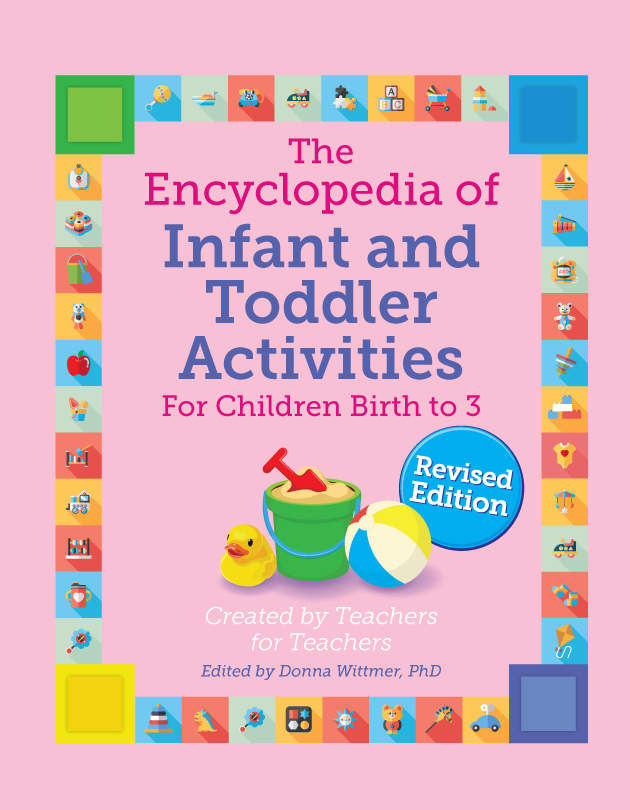Children learn to build their motor skills in a variety of ways. Gross motor skills develop easily, with large movements like crawling, running, jumping, and playing. Fine motor skills, on the other hand, require a bit more finesse. When children are too young to write or use scissors, it can be hard to find tasks that let them build these fine skills. Thankfully, The Encyclopedia of Infant and Toddler Activities revised is here to help!
Lacing is a safe, fun way for very young children to develop dexterity and fine motor skills. You can even build lacing patterns out of materials you have right at home! Check out how with this simple activity:
Materials:
• Colored card stock
• Stencils of animal shapes (optional)
• Pieces of colored yarn
• Children’s large plastic needles
• Scissors (adult only)
• Hole punch
• Tape
What to Do:
Ahead of time:
1. Cut the colored card stock into basic shapes (square, triangle, etc.) or use the stencils to create animal shapes
2. Using a single-hole paper punch, randomly punch holes in the shapes, being careful not to punch the holes too close together or too close to the edge of the shape. Depending on the age of the child, you might want to punch only three or four holes in the shape
3. Thread a piece of yarn onto a yarn needle. It is best to use a yarn color that contrasts with the color of the shape, so that the child can clearly see the stitches she makes
4. Tie a loop in the yarn with a small knot so that the needle cannot be pulled off the yarn
5. Tape the opposite end of the yarn onto the back of the card stock shape
With the Children
1. Show the children how to weave the needle and yarn in and out through the holes in the shape If a child becomes frustrated, she will learn to manage her feelings with the help of familiar, supportive adults
2. Safety Alert: This is a one-on-one activity with one teacher working with one student. Children should never be left alone with a plastic needle
More to do:
• If handling a needle is too difficult, use a shoelace with the hard sheath ends (aglets). Tie one end to the card and let the child use her fingers to thread the other end of the shoelace through the holes
• Some children will wrap the lace around the whole card to put the lace through another hole from the top side. Teachers can decide which children would benefit from help turning the card over each time the lace is put through another hole
• Some children may prefer to thread the yarn through large holes in blocks
• If children have difficulty with the task, provide rings (too large for choking) with large holes in them for children to manipulate a piece of yarn or string through
